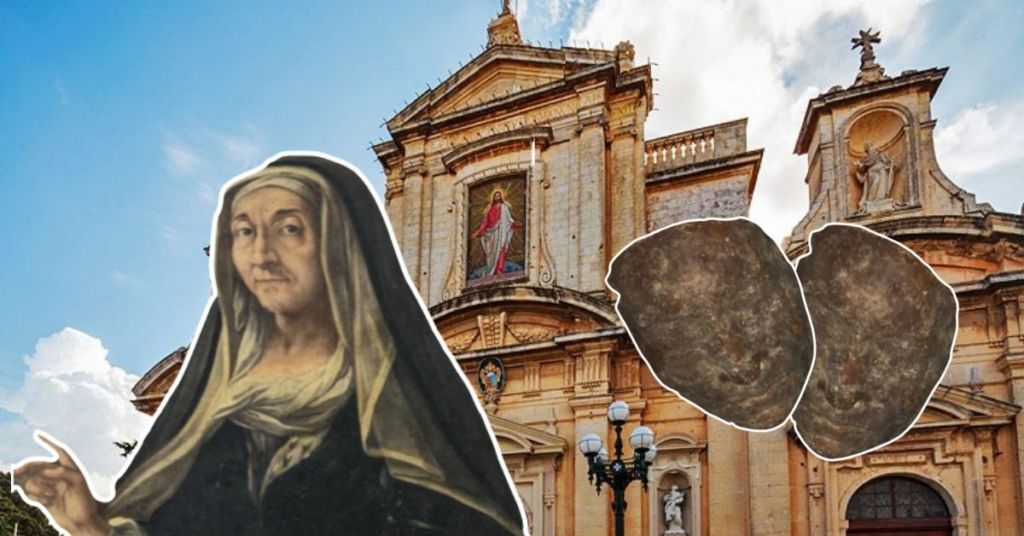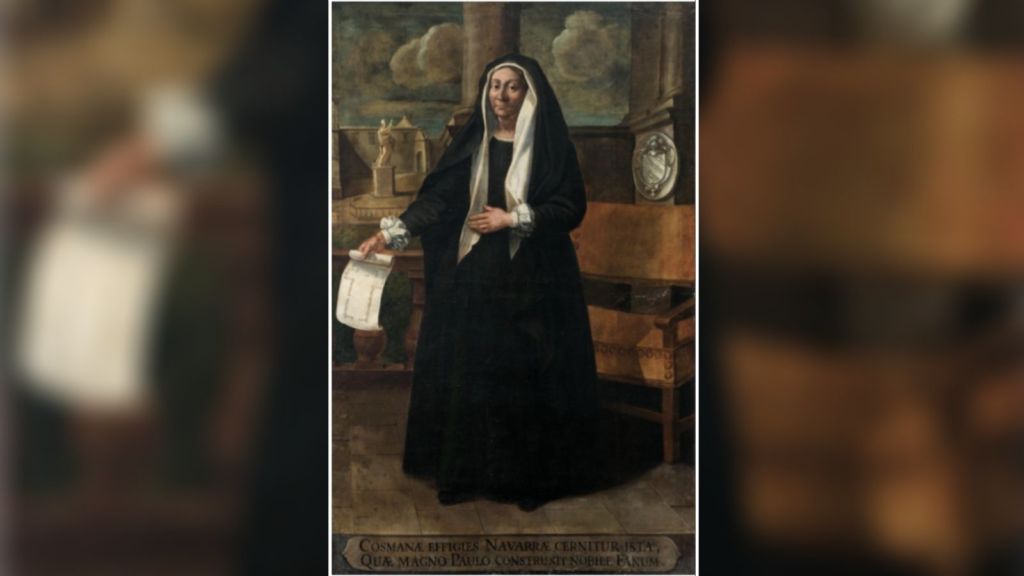MALTESE HERSTORY: Meet Malta’s First Female Patron Of The Arts

When it comes to the finest 17th-century art, Malta is an island gem like no other. The Knights of St. John brought their penchant for Baroque art to the islands, certain patrons of art also did their part in embellishing it.
Patrons like Cosmana Navarra, Malta’s first female patron of the arts and certainly one of the island’s most prolific.
Born at the turn of the 17th century, Cosmarra Navarra was born in Malta to aristocratic ties and Spanish nobility. While she came from a family of prominent judges and jurists, Navarra’s passion was to the arts and the divine, in a time when the grandiose stylings of the Baroque were unfolding in Europe. But having been married at just 15, she didn’t have the privilege to travel to experience high art in person, so religiously studied prints of art and architecture.

While the Knights of St. John, who dwelled in Valletta, would turn it into the jewel it is today, Cosmana Navarra dedicated her life to commissioning the best artists on the island to elevate her rural town of Rabat into an architectural landmark in the North.
Indeed, Navarra is best known for her life’s greatest project, financing the reconstruction and embellishment of St. Paul’s Parish Church in Rabat. She watched it being built for 30 years from the window of her townhouse just opposite. She brought in the esteemed architect of the Knights, Francesco Buonamici, to design it. This illustrates the influence she had – something rather unheard of for a 17th-century woman.

Besides the actual building of the church, she commissioned a myriad of decorative objects as well as artworks of the finest standard, like that of Stefano Erardi, one of Malta’s most important artists at the time, who painted the Shipwreck of St Paul in Malta. She also commissioned Michelangelo Marullo’s Virgin and Child with St. Phillip Neri and St. Anthony the Abbot, Mattia Preti’s Martyrdom of St Stephen. Indeed, anyone with a relish for Malta’s rich artistic heritage should pay homage to her pioneering role as a female patron of art.

Women have been patrons for the last 3,000 years but were overlooked and overcast by their male counterparts for most of written history. The word patron is itself a patriarchal word, coming from Latin world, patronus, or protector of clients, a derivative from pater, meaning father.
But unlike other women who were confined to their domestic roles, Navarra enjoyed freedoms very few women had. Twice a widow and having lost her only son, she was in full control of her finances and the considerable assets and property at her disposal.

Despite her wealth and status, Navarra lived with virtue and kindness, using her role and money to benefit her town of Rabat, to help build the church and monastery of St. Peter and support Benedictine nuns at Mdina. With her second husband, Lorenzo, she lived as a great benefactor and philanthropist, even taking in her maid’s son as if her own, after her own child, a renounce Jesuit philosopher and writer, Ignazio, died.
As with every prestigious patron of the arts, Navarra had portraits made in her honour. She is immortalised in two full-length paintings and a bronze death mask. The first painting is an elegant full-length portrait in Wignacourt Collegiate Museum and a half-length portrait can be found in the scarcity of her beloved St. Paul’s Church.
The full-length portrait, which some believe to have been created at her request, shows her as powerful a seventieth-century woman, in a similar pose normally reserved for authoritative men, whose art was made for her community as opposed to her own private view. It was painted by an anonymous artist.
In the portrait, she sits in her Rabat House, known as Casa Cosmana Navarra, situated opposite the parish church. Donning dark robes, a saint-like face looking directly at the viewer and the plans of the church in her hand, it’s a celebration of her life’s success as a patron. In the second portrait, by Gio Nicola Buhagiar, she is an older woman seen to be in mourning clothes, perhaps in honour of the death of her two husbands and only child. It is the only prominent portrait of a woman in the church.

Her portraits are worth-mentioning. Those in powerful positions would depict often themselves as authoritative figures, as mythical figures or performing activities associated with men. Navarra did not opt for an over-glossed, idealised portrait but one that evoked power: a woman holding the plan of a church. No other patron in Malta had presented themselves in this manner before.
As art historian Nadette Xuereb explained in her work on Navarra:
“She presented herself as a male patron of the arts typically would, she is a connoisseur and a prominent patron, a feat that would be taken on by other female patrons and benefactors in the Maltese Islands in later years.”
Navarra certainly broke boundaries for women in Malta, but she wasn’t recorded to support female artists on the islands for her own collection or Rabat’s parish.
Female patrons often commissioned other females as artists, to support them in their careers. At the time, the first recorded female painter, Suor Maria Dedomenici, was known but mediocre in her brushwork. Some say it could be Dedomenici’s work, because it was never accredited to an artist, although this is highly debated.
The noblewoman’s connection to wealth brought Malta works that are acclaimed by art historians, locals and the countless tourists that hail to the country to marvel at its historical beauty. But it’s Navarra’s dedication to art and charity that cements her place in history.
While she is the first female patron of the arts, she could have commissioned works for her own eyes, but instead believed in art for the community, regardless of their status, and opened the door for future female patrons and female artists too. Her donations and commissions stamped with her coat of arms can be seen across the islands, her role forever imprinted in the history of art.
Special dedication to art historian Nadette Xuereb and her research on Cosmana Navarra. You can read her Masters thesis on Navarra here.
Tag someone that needs to know about Cosmana Navarra!
